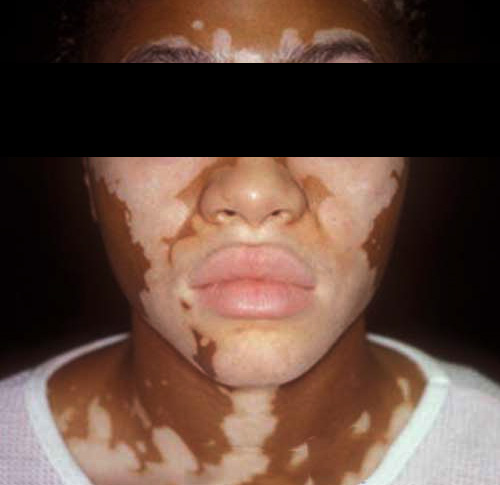Understanding Vitiligo
Understanding Vitiligo
Vitiligo is a chronic skin condition that causes areas of the skin to become depigmented (or lose pigment). Considered an autoimmune disease, vitiligo is thought to occur when the body’s immune system attacks and destroys melanocytes (the cells that produce pigment) — leaving the affected area of skin void of color. Vitiligo most often affects the face, elbows, knees, hands and feet, and the condition is more noticeable in people with darker skin tones.
Most of the scientific evidence suggests that the immune system (body defence system that protects us from germs and infections) gets hyper-activated and rather than attacking on the foreign elements such as germs, starts to kill bodys own normal structures. In the case of Vitiligo, the bodysdefence system starts to attack melanocytes (pronounced as Me-lan-o-cytes) these are the cells that produce the color in the skin. So these color producing cells are killed and white or colourless spots of vitiligo are produced.
NO. Absolutely not. This myth exists only in India and Pakistan. Many cuisines in various parts of the world cook fish in milk routinely. If this were true, all of them should have gotten vitiligo. To date no substantial scientific evidence has ever been given to support this is whim which is no more than a regional mumbo jumbo existing in our part of the world.
About 1 in 200 people develop vitiligo. Men and women are equally affected. It can develop at any age. However, it begins before the age of 20 in about half of cases. There is some genetic factor involved and vitiligo may run in the family. About 1 in 5 affected people have some other family member who is also affected. Vitiligo is not infectious and you cannot catch it from affected people. It is not more common in any racial or ethnic groups.
About 1-3% of the India s population is affected by Vitiligo.Vitiligo is most common in the first and second decade of life and 95% of people develop it before their 40th birthday.
About 1-3% of the India s population is affected by Vitiligo.Vitiligo is most common in the first and second decade of life and 95% of people develop it before their 40th birthday.
People with vitiligo are usually well. Vitiligo is not sore or itchy. However, the appearance of the skin can be distressing, particularly if the face or the hands are affected. There is no natural protection from the sun in affected areas of skin. This means that skin affected by vitiligo burns much more easily than normal skin if exposed to sunlight.
Vitiligo generally appears in one of the three patterns:
Focal Pattern : Depigmentation is limited to one or only few areas.
Segmental Pattern : Depigmentation develops on only one side of the body.
GeneralisedPattern : Depigmentation develops on different parts of the body.
Diagnosis of Vitiligo
Clinical Examination
Depigmented patch is usually the diagnostic features of Vitiligo. There may be a predisposing history of a rash/sunburn or trauma at the site of patch 2-3 months prior to the onset or History of auto-immune disease in the family. A biopsy of affected skin confirms Vitiligo.
Focal Pattern : Depigmentation is limited to one or only few areas.
Segmental Pattern : Depigmentation develops on only one side of the body.
GeneralisedPattern : Depigmentation develops on different parts of the body.
Diagnosis of Vitiligo
Clinical Examination
Depigmented patch is usually the diagnostic features of Vitiligo. There may be a predisposing history of a rash/sunburn or trauma at the site of patch 2-3 months prior to the onset or History of auto-immune disease in the family. A biopsy of affected skin confirms Vitiligo.

